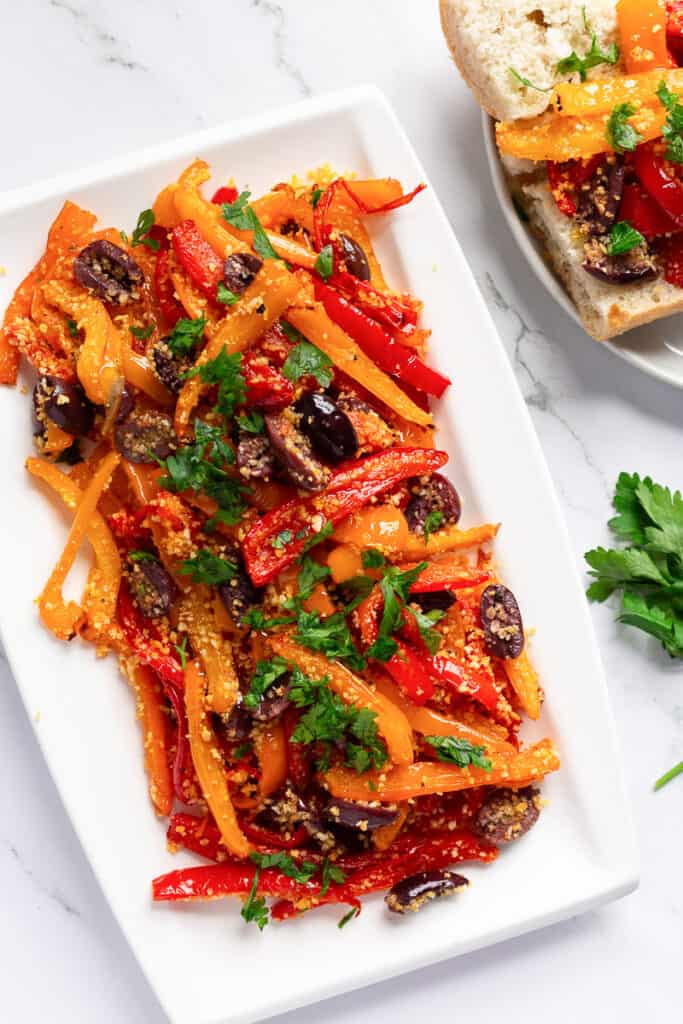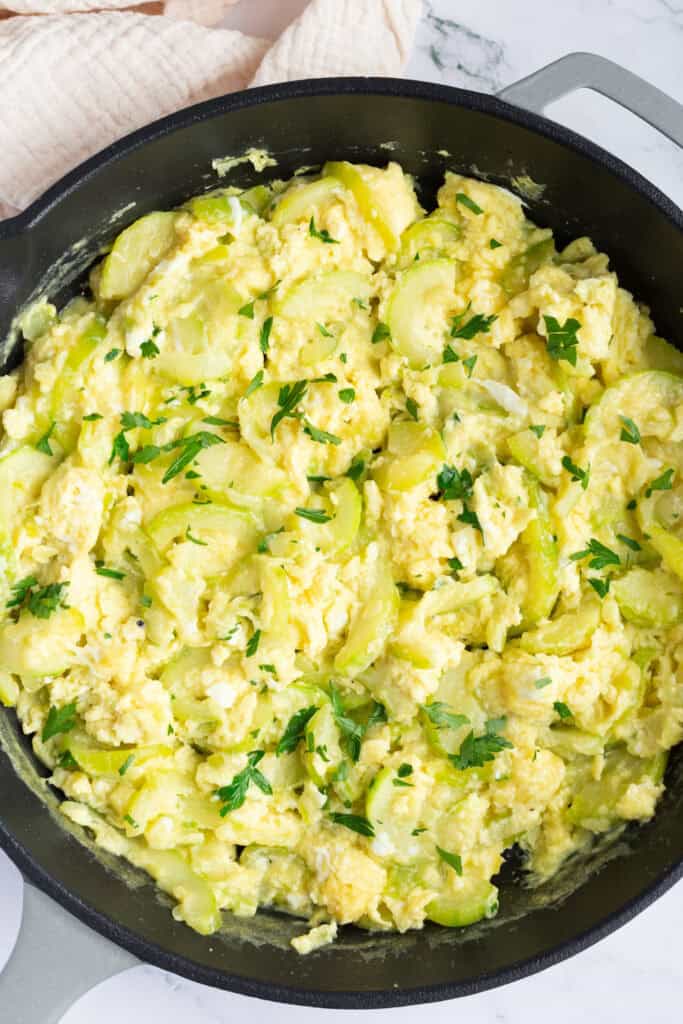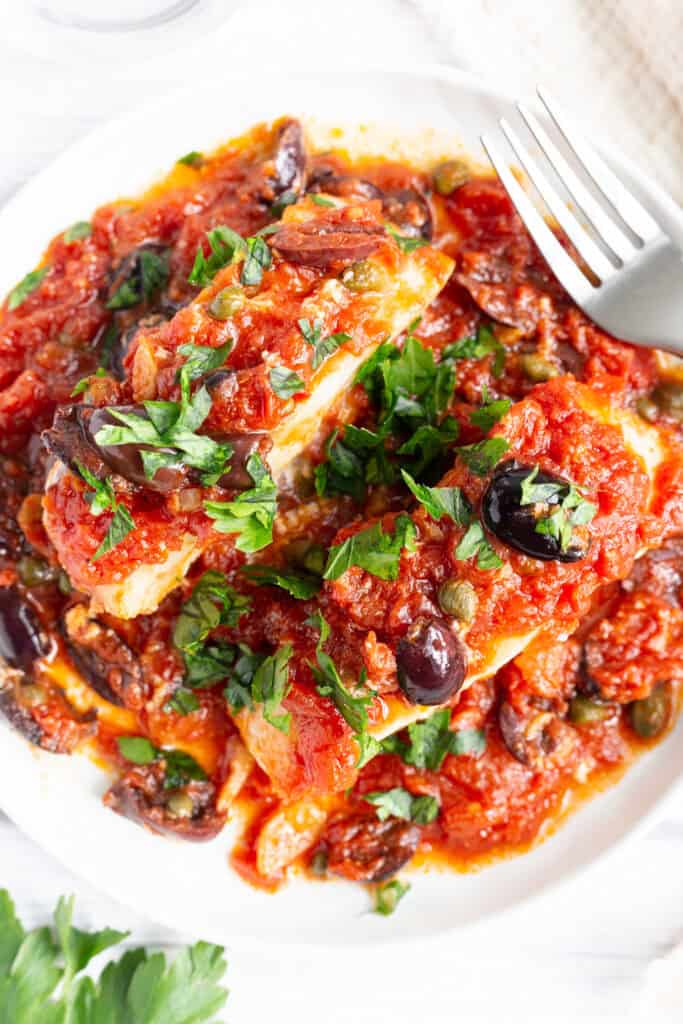Linguine Aglio e Olio with Roasted Garlic
Transform classic linguine aglio e olio into linguine aglio e olio with roasted garlic. Containing minimal ingredients—and minimal effort—this pasta no less delivers maximum flavor. Buon appetito!
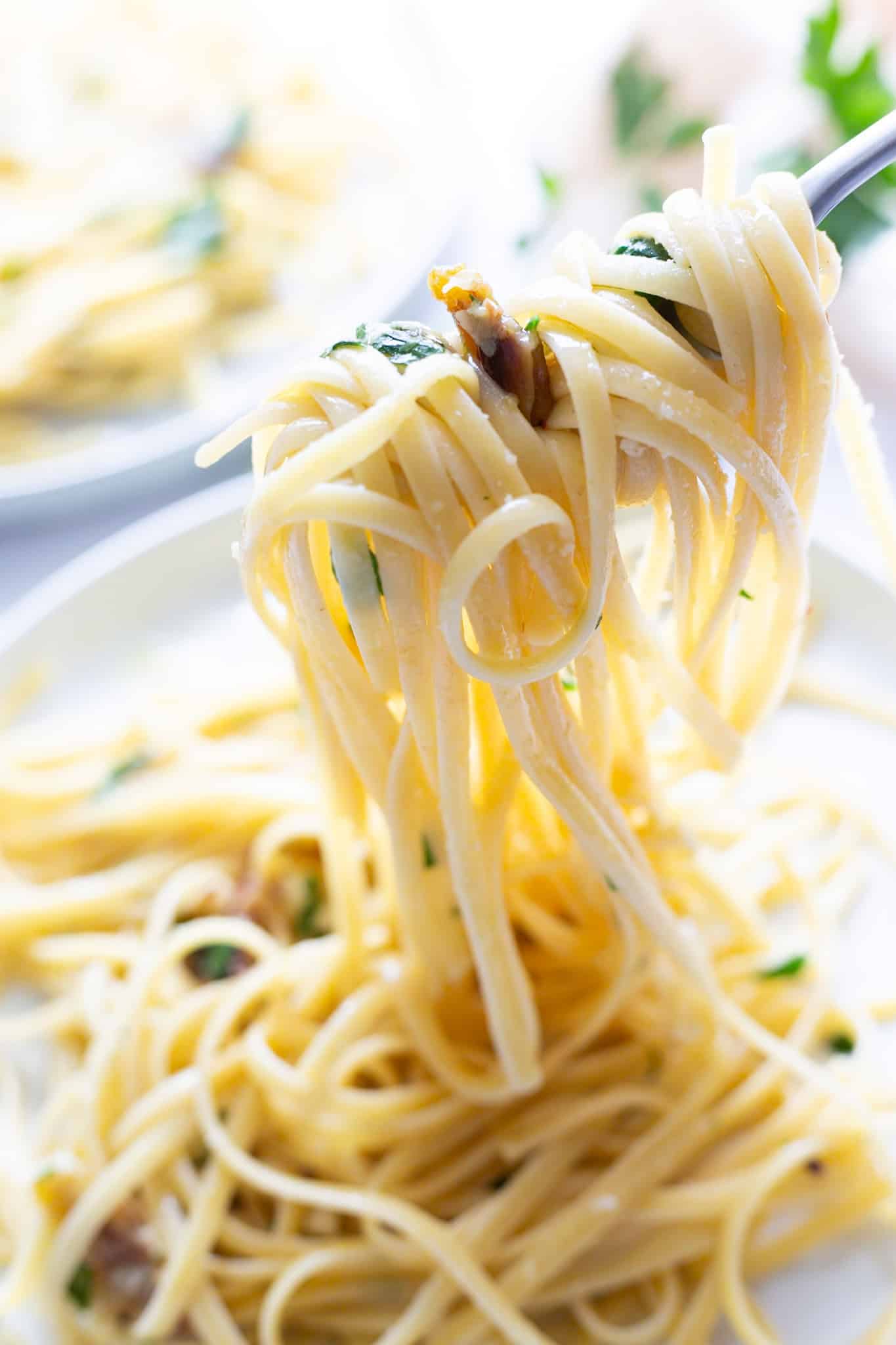
This post may contain affiliate links. Please read our affiliate disclosure.
Linguine aglio e olio. Or, as the kids call it, garlic and oil pasta! One of the easiest and most budget-friendly pasta dishes around (pasta, oil, and garlic are pretty much all you need), linguine aglio e olio’s wonderful flavor belies its simple Neapolitan origin.
My own Neapolitan origin may explain why I love this dish so much. Don’t worry; I won’t be sharing memories of making this in my nonna’s Brooklyn kitchen when I was knee-high to a grasshopper (such memories don’t even exist!).
But I will tell you about the ingredient that takes this linguine aglio e olio to the next level: roasted garlic.
I can’t claim roasted garlic is unprecedented in this recipe, but it doesn’t seem to be a common approach even though this version is so darn-tootin’ good. The roasted garlic’s sweet, nutty flavor and caramelization are irresistible whether tossed with pasta, spread on bruschetta, or applied as a facial—kidding.
And the way its silky texture clings to the pasta makes it especially dreamy. Swoon.
Oh, and if you want to top this with some toasted Panko breadcrumbs, you can find out how to make them from my recipe for linguine with clams, anchovies, and breadcrumbs.
Why You’ll Love This Linguine Aglio e Olio (with Roasted Garlic)
- It’s quick and easy to make: Although you have to prep the garlic beforehand, it doesn’t take long, and the remaining dish comes together in minutes.
- It’s perfect for beginner cooks: If you’re a first-time cook or have limited cooking hours under your belt, this is an ideal recipe to try. With so few ingredients and easy steps, it’s virtually foolproof.
- This dish is inexpensive: Most of this recipe consists of pantry items you’re likely to already have on hand.
Ingredients You’ll Need
- Fresh Garlic: You’ll need two whole heads of fresh garlic for roasting.
- Extra Virgin Olive Oil: Extra-virgin is a must in this recipe with so few ingredients.
- Linguine: Spaghetti works, too.
- Red Pepper Flakes: This balances the sweetness with a touch of heat.
- Italian Flat-Leaf Parsley: None of the dried stuff here. The fresh parsley gives this dish…freshness.
- Pecorino Romano: “Ordinary” Parmesan won’t cut it. You’ll need the quality stuff!
See the recipe card below for more information on ingredients and quantities.

How to Make Linguine Aglio e Olio with Roasted Garlic
- Roast the garlic: Wrap the garlic seasoned with olive oil and a pinch of salt in aluminum foil and roast at 425F until soft, about 45 minutes.
- Boil the linguine: Cook the linguine until al dente.
- Simmer the fresh garlic: Squeeze the roasted garlic from each head and simmer it gently in olive oil to infuse it. Add the red pepper flakes and a pinch of salt.
- Drain the pasta: Reserve about 1 cup of pasta water.
- Assemble: Toss the linguine with the garlic mixture, add some reserved pasta water to loosen it, and garnish with the fresh parsley and Pecorino.
Pro Tips
Reduce the amount of garlic, if necessary: If the garlic heads are very large, feel free to reduce to 1 and 1/2 heads instead. Just remember that the garlic sweetens when it roasts, so don’t be afraid to stick to 2 whole ones.
Use extra virgin olive oil: Don’t use regular olive oil, as it won’t be flavorful enough. Instead, use high-quality extra-virgin olive oil. When I say high quality, I’m referring to something full-bodied with a rich color (could be either more golden or more green-ish), fragrant scent, genuine olive flavor, and almost buttery texture. There are many good to excellent ones out there, but a solid yet economical option I recommend is Colavita.
Use Pecorino Romano cheese: This sharp and pungent sheep’s milk cheese blends beautifully with the mellowness of the roasted garlic. I’m a big fan of Locatelli, but many good ones are available, including at Costco! You could also use Parmigiano Reggiano or Grana Padano—both milder cheeses but equally delicious. I don’t recommend the bottled grated cheeses you find in the supermarkets.
Add the cheese after serving: Adding the cheese to the linguine before serving it will cause it to dry out a little if you plan on having any leftovers because it will absorb some of the moisture.
Suggestions for Variations and Substitutions
- Other long pasta like thin spaghetti, angel hair, and even fettuccine would work.
- Add lemon zest to the finished dish for some acidity.
- Garnish the top with toasted Panko breadcrumbs for some crunch.
Recipe FAQs
Yes, this dish originated in Naples, Italy, with variations of it found throughout the country (and the world, for that matter).
Aglio means “garlic,” and olio means “oil.”
Roasted garlic develops a sweet and nutty flavor and a smooth, buttery texture. It’s very different from raw or even lightly cooked garlic.
Storage
Refrigerator
Store in an airtight container in the refrigerator and consume within 3 days. If you have any remaining pasta water, pour some of it into the container with the pasta. This will help keep it moist upon reheating.
Freezer
I don’t recommend freezing cooked pasta.
Reheat
Reheat in an oven-proof pan, covered, at 350F or lower until heated through. You can also microwave it in a microwave-safe bowl. Cover it with a sheet of wax paper to keep it from drying out.
More Garlic-Friendly Recipes
- Linguine with clams, anchovies, and breadcrumbs
- Ginger-scallion noodles with shrimp
- Shrimp and garlic-shallot rice
If you love this recipe, I’d appreciate it if you could take a moment to review it below. You could also tag me on Instagram (@forcarbssake) with a picture of your finished dish!
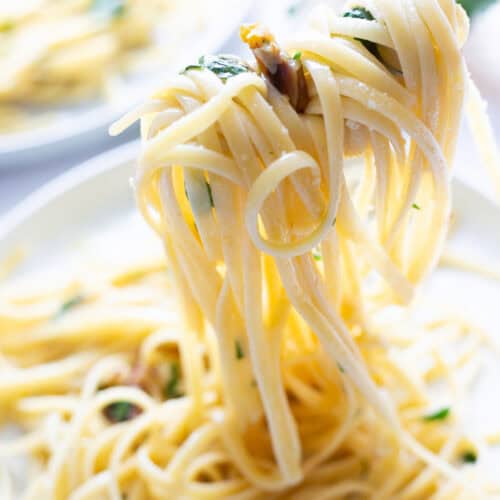
Linguine Aglio e Olio (with Roasted Garlic)
Ingredients
For the Roasted Garlic
- 2 whole garlic heads (Note 1)
- 2 teaspoons extra virgin olive oil, divided
- Pinch of salt
For the Pasta
- 16 ounces linguine
- ½ cup extra virgin olive oil (Note 2)
- ½ teaspoon red pepper flakes, or more to taste
- Pinch of salt
- Handful Italian flat-leaf parsley, minced
- Grated Pecorino Romano (Note 3)
Instructions
- Preheat the oven to 425℉. Peel away the loose skins from both heads of garlic, and use a knife to slice off about ¼" to ½" from the top of each. Place the garlic heads on a sheet of aluminum foil, and drizzle 1 teaspoon of olive oil over each one along with a pinch of salt. Wrap them tightly in the foil and place them on a small aluminum pan and in the oven.2 whole garlic heads; 2 teaspoons extra virgin olive oil, divided; pinch of salt
- Roast the garlic for 45 minutes; they should be completely softened when done. Once cooled, squeeze the roasted garlic from each head by pressing from the bottom with your hands—or the flat side of a butter knife—and slowly pushing upward. Make sure to squeeze every last bit, careful to discard any loose skins.
- Boil a large pot of salted water and cook the linguine until it's al dente, reserving about 1 cup of pasta water.16 ounces linguine
- Meanwhile, heat the olive oil in a large saute pan. Add the roasted garlic and simmer it gently. The garlic will likely stick together, so break it up with the tip of a wooden spoon and press it into the oil, about 2 minutes. Add the red pepper flakes and a pinch of salt to the pan. Gently stir the ingredients together for about 1 minute more before removing the pan from the heat.½ cup extra virgin olive oil; ½ red pepper flakes, or more to taste; pinch of salt
- Toss the linguine with the garlic and olive oil mixture, and garnish it with the parsley. Add enough reserved pasta water to moisten everything and create a slightly creamy consistency.Handful Italian flat-leaf parsley, minced
- Serve the linguine, and top it with grated Pecorino.Grated Pecorino Romano

